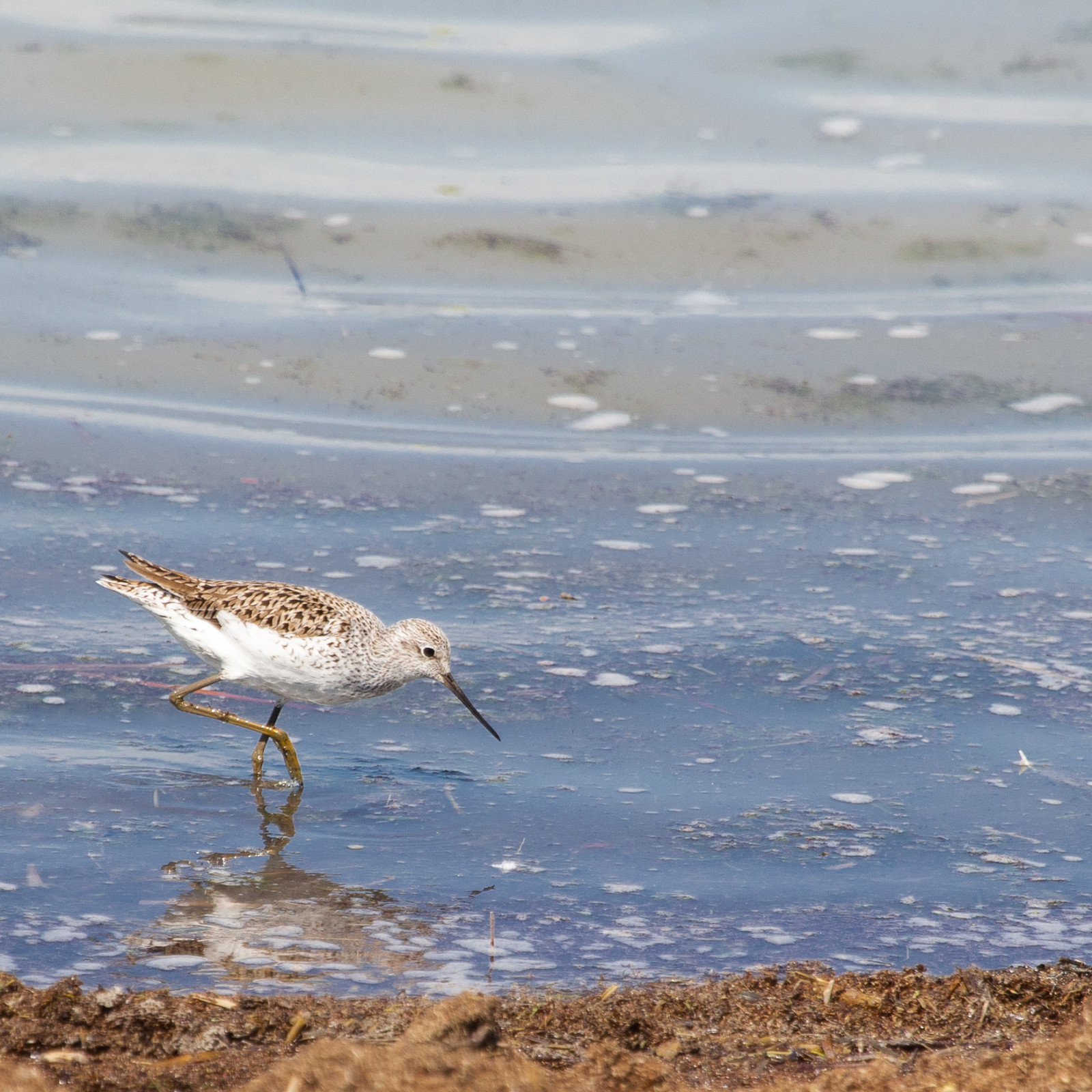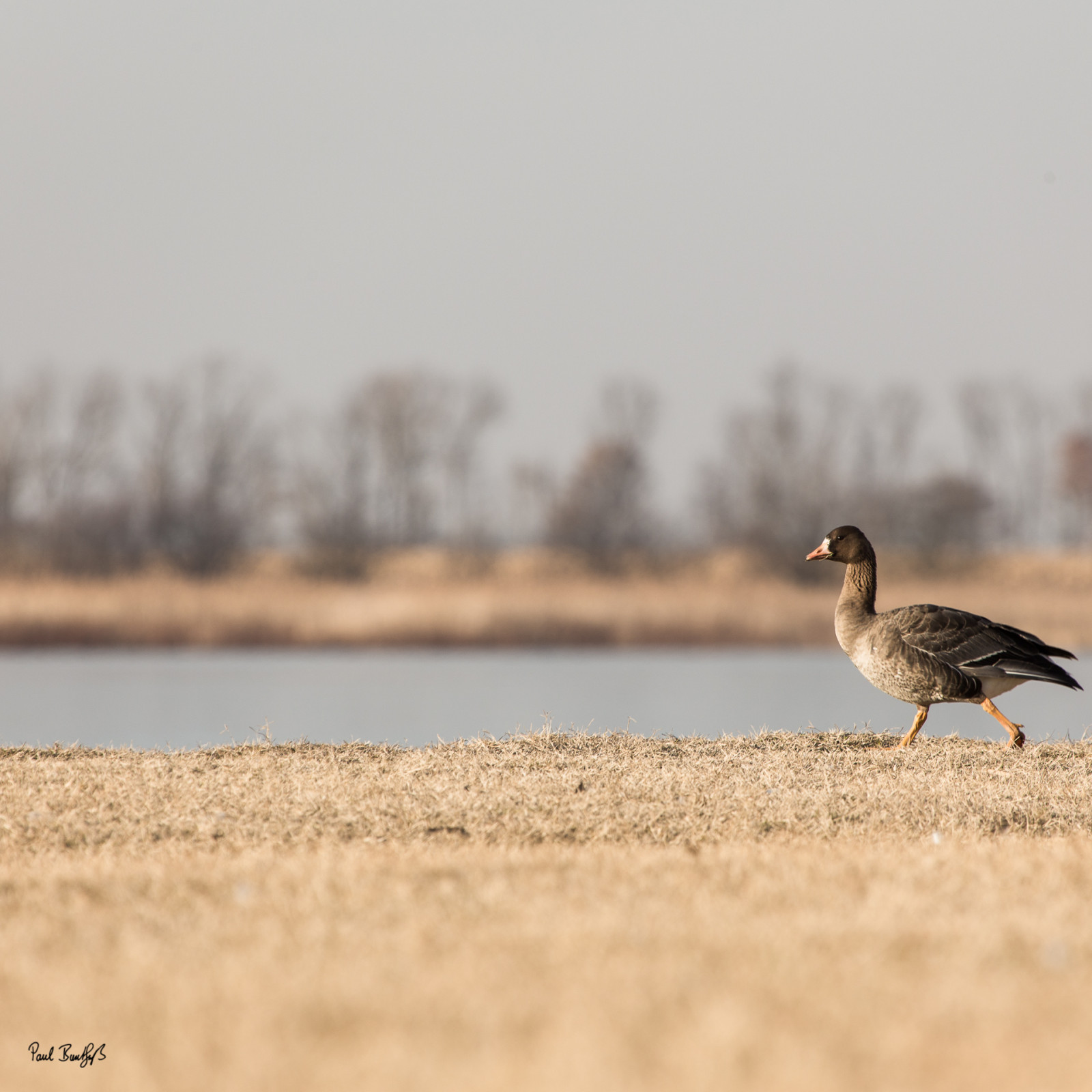Beschrijving
In autumn and winter, the Zicksee attracts thousands of nordic geese. The first flocks often already arrive to drink and rest late mornings, and are scanned by birdwatchers for rare species and neckbands. It is not uncommon for hunting Zeearend to put an abrupt end to the bustling activity on the water, sending the clamouring flocks into the air to return to nearby or more distant foraging grounds. If the Lange Lacke, the main roosting area, is dry at this time of year, the geese will mostly also return to the Zicksee to sleep.
Due to its slightly deeper water, the St. Andräer Zicksee is generally popular with diving ducks and mergansers. Aalscholver, gulls, and Meerkoet also appreciate this large body of water. During longer periods of bad weather, large congregations of foraging marsh terns, Dwergmeeuw, and swallows can often be seen here. When the shore zone becomes wider with falling water levels, an abundance of waders attracts birdwatchers and photographers. The more common waders on the Zicksee include Kleine Plevier, Oeverloper, Tureluur, Groenpootruiter, Kemphaan, and Steltkluut.
Details
Toegang
For a good view of every part of the lake, it is worth scanning the surface from a number of points. Starting on the southern shore near the Reihersiedlung, a trained ear will be able to pick the reed passerines from the western shore as well as the garden birds from the residential area. Scanning the western shore for rails, herons, and – provided water levels are low – waders can produce the occasional surprise. An unremarkable tree-covered lawn right by the surf club can attract Gele Kwikstaart and other passerines on migration, while the entire length of the eastern shore can be interesting for waders and gulls. The old stock of trees at the lakefront resort is often frequented by Syrische Bonte Specht , Grote Bonte Specht, and Groene Specht, while Zanglijster and Houtduif can be seen at quite close quarters. During the spring and summer months, Kokmeeuw and the occasional Visdief like to rest on the shore. Finally, the bay at the northern shore is a great place to see ground squirrels up close, as well as birds of the reed edges. At lower water levels, it provides another chance to observe waders.
Terrein en leefgebied
Wetland , Grasland/weide , Verspreide bomen en struiken , Steppe , MeerOmstandigheden
Vlak , Open landschapRondlopende wandeling mogelijk?
NeeTelescoop meenemen?
Kan handig zijnWanneer hier vogels kijken?
Het hele jaarToptijd voor dit gebied
WinterRoute
Verharde wegZwaarte wandeling
GemakkelijkToegankelijk via
Auto , Fiets , Te voetVogelkijkhut aanwezig?
NeeExtra info
The mud from the Zicksee and other saline lakes is said to have a beneficial effect on the skin and joints. In earlier times, it was used to treat rheumatism in the orthopaedic clinic on the north-eastern shore of the lake.





